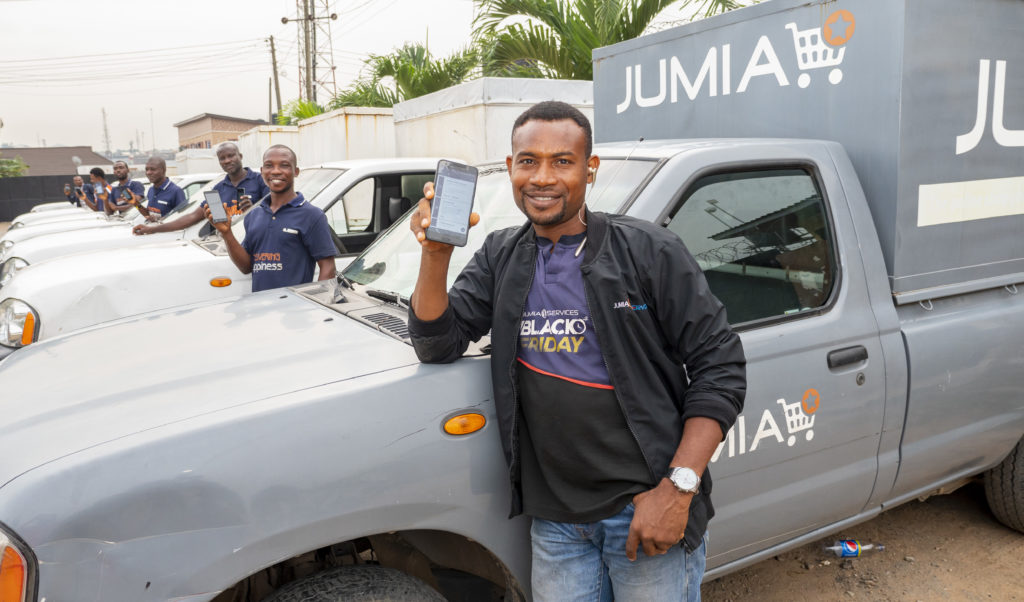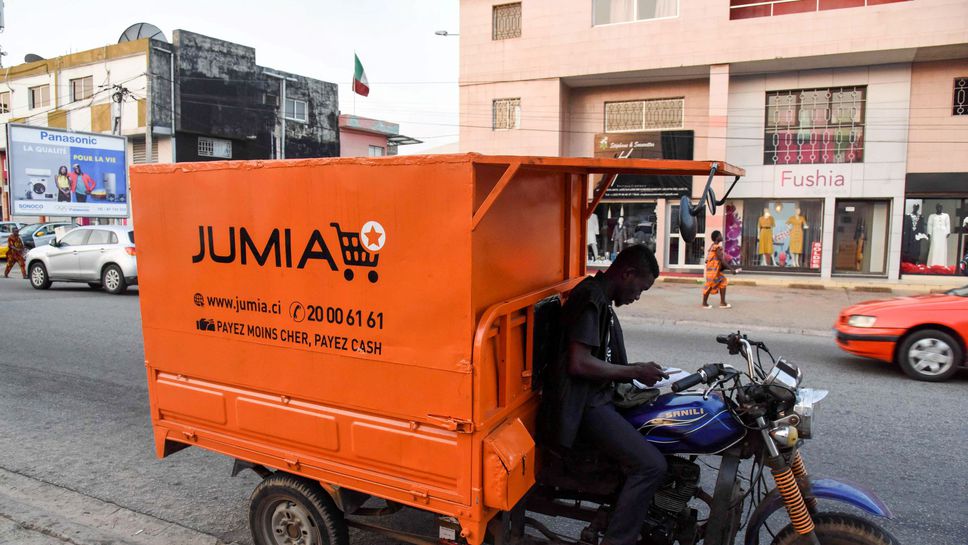News
CEO Francis Dufay Pivoting Jumia Amidst Challenging Macroeconomic Conditions (Seeking Alpha)
June 3, 2023Company News

Summary
-
Jumia Technologies is focusing on long-term growth strategies, including expanding into secondary cities in Africa and addressing pent-up demand for e-commerce.
-
The company has achieved significant results in cost-cutting and efficiency improvements, despite challenges posed by global economic conditions.
-
CEO Francis Dufay remains optimistic about the company's future, and investors should watch for the results of these strategic shifts to become evident in Jumia's financials.
I sat down with Jumia Technologies (NYSE:JMIA) CEO Francis Dufay to discuss his company's first quarter earnings results. We talked about Jumia's progress on executing its strategic pivot and the resulting financial standing of the company. Jumia continues to execute its long-term strategy of transforming the company into a lean e-commerce platform that extends supply to underserved markets and provide value across its 11 African markets. It is a challenging time to execute a pivot, but Dufay has laid out a clear, confident, and well-supported plan. These highlights from our discussion include data from the Q1 2023 earnings conference call.
Growth Strategy: The Pivot Explained
Dufay is steering Jumia in a new direction, shifting away from short-term growth levers towards strategies sustainable over the long-term. "In the past, we allocated big numbers to promotions, customer incentives, Google, and Facebook. But that was too expensive. Now, we are focusing on long-term actions like building supply in key categories and extending to smaller cities," Dufay explained. This "takes time because it's about building logistics and educating new populations to ecommerce."
The CEO acknowledged the challenges accompanying this strategic pivot, noting that "we're caught in the middle as we cut short-term levers of growth and don't yet see the results of the long-term actions." This transition period makes growth and usage improvement a top priority. He noted that the effects of this strategic shift should gradually reflect in their top line between Q3 and Q4. Seeing this progress will be key for investors who have waited out this strategic pivot.
Growth Strategy: Secondary Cities
A significant portion of the new population resides in what are known as secondary cities. As described by British International Investment in "Expanding online marketplaces across secondary cities - lessons from Cote d'Ivoire: Practical thinking on investing for development" (April 28, 2022), secondary cities have populations of less than 100,000 where "access to quality products at affordable prices is more limited. In secondary cities, populations are typically lower income, less comfortable with digital platforms and less well-connected to established logistics infrastructure than in capital or primary cities." Dufay referred me to this case study as a great example of the potential Jumia has to leverage its proven successes in Cote d'Ivoire. He launched his Jumia career in logistics in this country. This case study forms a key part of the foundation underpinning Jumia's strategy. It describes both past successes and the potential upside from Jumia's systematic extension of effective e-commerce models into secondary cities.
Jumia established "pick-up stations" in parallel with its online marketplace e-commerce platform. "JForce agents" supported these stations by ordering for customers who are not (yet) comfortable ordering online. Surveys of customers were very promising: "all the surveyed customers confirmed they would re-order on Jumia, of which 87 per cent report being wholly satisfied with the offering." These customers cited cost savings, access to quality products, products that generate additional revenue for the buyer, and time savings as key drivers of satisfaction.
Jumia's best-selling product categories were also the hardest to find locally: electronic devices, clothing and fashion items, as well as household equipment. The ability to sell these products demonstrated the pent-up demand in these markets despite customers having low income with constrained budgets. Dufay stressed "the demand is there. It's just poorly served." Dufay's observations run counter to the conventional narratives that Africa is not ready for e-commerce. "I often read articles about there's no demand in Africa, or Africa is not ready for e-commerce. I wanted to clarify that there is demand and it's in our hands to address it well." The definitive proof will come with the on-going successful implementation of the company's strategic pivot.
Change Readiness
Jumia's willingness to experiment, change, and pivot aligns well with the findings reported in a recent Harvard Business Review article: "What African Fintech Startups Can Teach Silicon Valley About Longevity" (May 19, 2023). The article claimed that Africa-based companies raise the least capital and experience the highest longevity. HBR interviewed 200 senior level executives in African fintech between 2022 and 2023 and found change readiness, not investor readiness (the willingness to provide venture funding), was a key to longevity: "the ability to continuously initiate and respond to change in ways that create advantage, minimize risk, and sustain performance."
I asked Dufay to react to the three key points of the article. Does he agree? Do these points resonate for Jumia?
-
"Prioritize market acceptance over venture funding. Tailor storytelling to customers instead of investors."
-
"Emphasize community engagement over individualism. Engage stakeholder communities instead of individuals."
-
"Celebrate concrete milestones instead of capital raising" (including product and service milestones).
Dufay agreed that Jumia has been using this playbook. Jumia is part of a wave of African start-ups (and of course includes its own fintech platform in Jumia Pay). He observed that for some start-ups "raising money has been an easy way out of any challenge or problem. They don't have to address the real problems in the short-term." Jumia has not gone that route. Instead, Dufay insisted that "at Jumia we have to adapt and change and there's no other way around. We need to do what's right for customers and vendors."
Drawing on the lessons from the Cote d'Ivoire case about the importance of community engagement in secondary cities, Dufay affirmed Jumia's commitment to this model. "In big cities that are well digitized, purchasing is more of an individual action" he explained. "Outside of those cities with digital natives, then it is all about communities and building trust. Set up shop in the city with something physical people can touch."
Dufay has his finger on the pulse of commerce in Jumia's 11 markets. The company's change readiness and capacity to experiment and adapt are key reasons to stick by tis company through the current difficult times. Hearing Dufay tie everything together further bolstered the optimism I expressed after our discussion last quarter.
Weathering Global Economic Challenges
Jumia's pivot was necessitated by current economic challenges. That same economic squeeze makes the potential of Jumia's business model harder to see and understand. Dufay was frank about the difficulties posed by the global economic situation, including the inflationary pressures exacerbated by Russia's invasion of Ukraine and the Federal Reserve's monetary tightening which has reverberated throughout emerging markets via massive currency devaluations. However, Dufay remains focused on the promising prospects for an eventual turnaround. "I don't know how [economic conditions] can get worse from here. I cannot think of a worse economic environment than this one. That's as optimistic as it gets."
Accordingly, he also expressed expectations for better news quarter by quarter and reassured that the company's main objective remains to provide value to its customers and vendors amidst these temporary conditions.
This is a challenging spot to conduct a pivot, but the company needs to leverage its change readiness in this moment. Cost controls are a key platform for ensuring Jumia will make it to the other side of the pivot.
Efficiency and Cost-Cutting: Key to Sustainability
Jumia has been actively focusing on improving efficiency and implementing cost-cutting measures, particularly in fulfillment and logistics. "We've cut heavily on packaging without changing our value proposition, renegotiated third-party logistics, and optimized our network routes," Dufay stated. The company has achieved dramatic results. Fulfillment expense per order (excluding JumiaPay app orders) declined by 20% year-over-year from $3.10 to $2.50 and from 9.5% of GMV (gross merchandise value) to 8.1%.
Moreover, Dufay emphasized the company's shift towards aggressive cost management and revealed that Jumia still has pools of savings ahead. This cost-cutting trajectory, however, does not compromise growth strategies. "We still have pools of savings ahead that will not break the engine," Dufay added. "We need to separate the cost-cutting and the growth stories."
Jumia's cash runway has been a concern for some time. Dufay admitted that two quarters ago the cash burn rate was "pretty horrible." Yet he also insisted that the company has a few years ahead on the current cash runway. In Q1, even though Jumia accelerated its year-over-year reductions in costs, Dufay chose to hold adjusted EBITDA loss guidance for the year between $100M and $120M. Dufay proclaimed that "we did what we said we were going to do…We will keep working on EBITDA. We have not given a time guidance on breakeven. It's what keeps us awake at night….We deeply believe it is possible, otherwise I would not have taken this job." Again, this level of commitment and now proven execution help make me more optimistic about Jumia's longer term prospects.
In Q1, Jumia increased its cash cand cash equivalents from $71,579,000 in Q4 2022 to $86,861,000. With an operating loss of $30,858,000 and an adjusted EBITDA loss of $27,000,000 EBITDA, Jumia will definitely need to approach or reach breakeven by next fiscal year. Even with this pressure, Dufay insisted that "we're not thinking of a raise at this stage. We need to prove the concept with a clear constraint on cash and focusing on customers and vendors."
The Top Line
On the top line, despite year-over-year declines in quarterly usage performance for active consumers, orders, and GMV (22%, 26%, and 22% respectively, with a 6.1% decline in GMV on a constant currency basis), Jumia showed a year-over-year revenue growth of 24% on a constant currency basis. According to Dufay, the observed increase in Jumia's revenue was primarily driven by commissions and fees from marketplace services. Nigeria made it on the list of drags for the quarter as Presidential elections and a currency crunch converged to create challenging market conditions. In my previous discussion with Dufay, I expressed hope that digital payments could provide a solution for scrambling Nigerian consumers. So far, the results appear mixed. Jumia saw an "uptick" after fortuitously launching Jumia Pay on delivery. However, according to Dufay:
"Crisis could have been an amazing enabler for us. The problem was the infrastructure did not digitize the economy as much as it should have; the infrastructure was overwhelmed by the flow. Understandably and unfortunately…Crisis could have been an opportunity for Nigeria to further digitize."
Now Nigerian consumers face fresh economic stress this time in the form of the surprise elimination of fuel subsidies. Accordingly, I am expecting another quarter of top line challenges in Nigeria. On the positive side, the higher fuel costs should put an extra premium on shippers like Jumia with efficient logistics.
Conclusion and the Trade
Jumia Technologies is navigating through a strategic pivot, focusing on long-term growth strategies under the guidance of CEO Francis Dufay. The company is pushing into secondary cities, addressing the pent-up demand for e-commerce in these areas. Despite the challenges posed by global economic conditions, the firm remains optimistic, harnessing its readiness to adapt and change. Importantly, it has achieved significant results in cost-cutting and efficiency improvements. However, as the pivot continues, I will watch for the results of these strategic shifts to become evident in Jumia's financials.
Since reaching prices last seen in the early days of the pandemic, JMIA has shown hints of bottoming price action over a period of price consolidation. Today's 12.4% surge over the 50-day moving average (DMA) (red line below) reversed the stock's losses after the Q1 2023 earnings report. Thus, this price reset to the pandemic trough offers a window to buy into JMIA at rock bottom prices. If Dufay succeeds, and I am increasingly optimistic that he well, I expect a relatively healthy payoff in coming years.
Read the original article on Seeking Alpha
About Jumia
Jumia is a leading e-commerce platform in Africa. Our marketplace is supported by our proprietary logistics business, Jumia Logistics, and our digital payment and fintech platform, JumiaPay. Jumia Logistics enables the seamless delivery of millions of packages while JumiaPay facilitates online payments and the distribution of a broad range of digital and financial services.
Follow us on, Linkedin Jumia Group and X @Jumia_Group
For more information about Jumia:
Abdesslam Benzitouni
[email protected]



